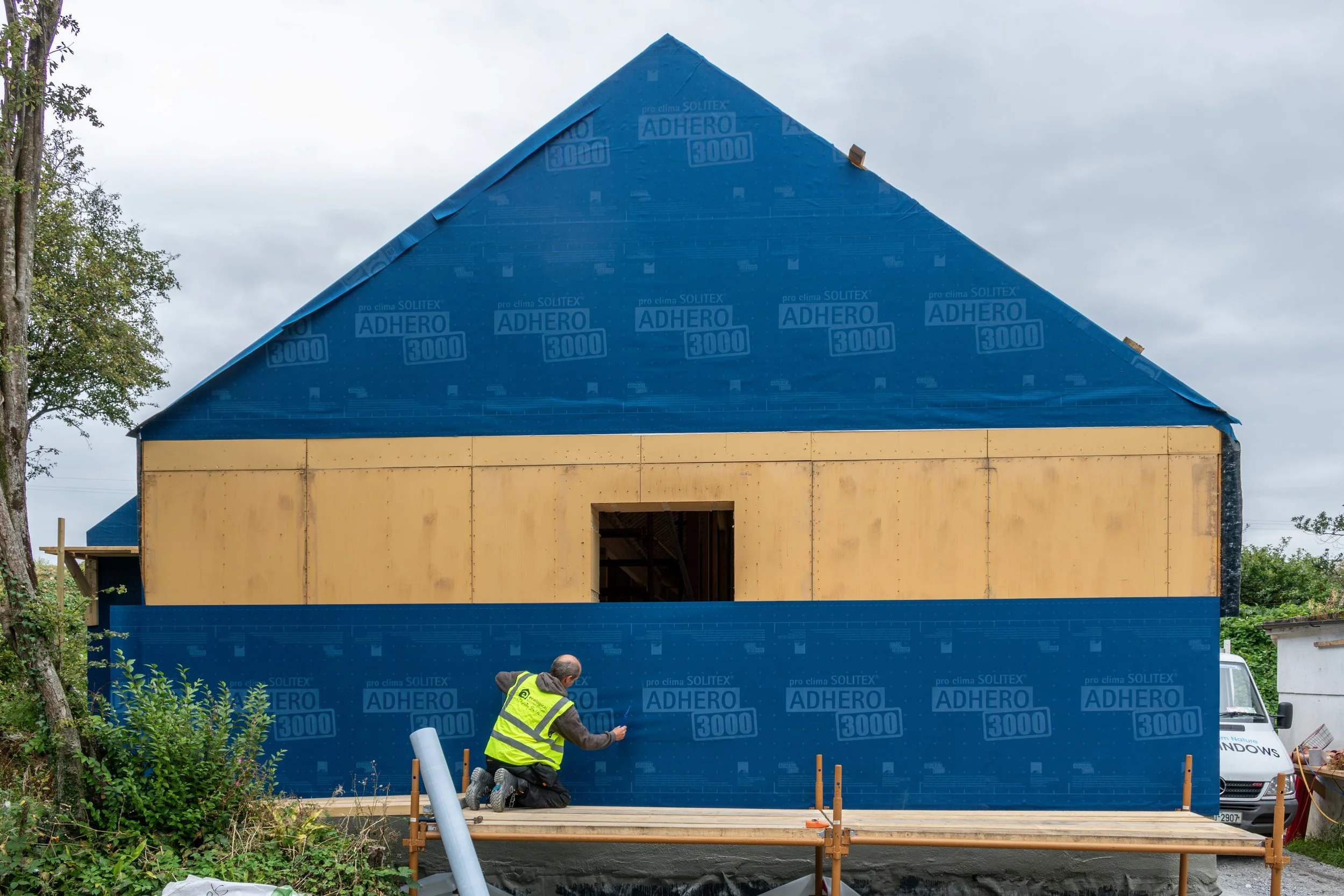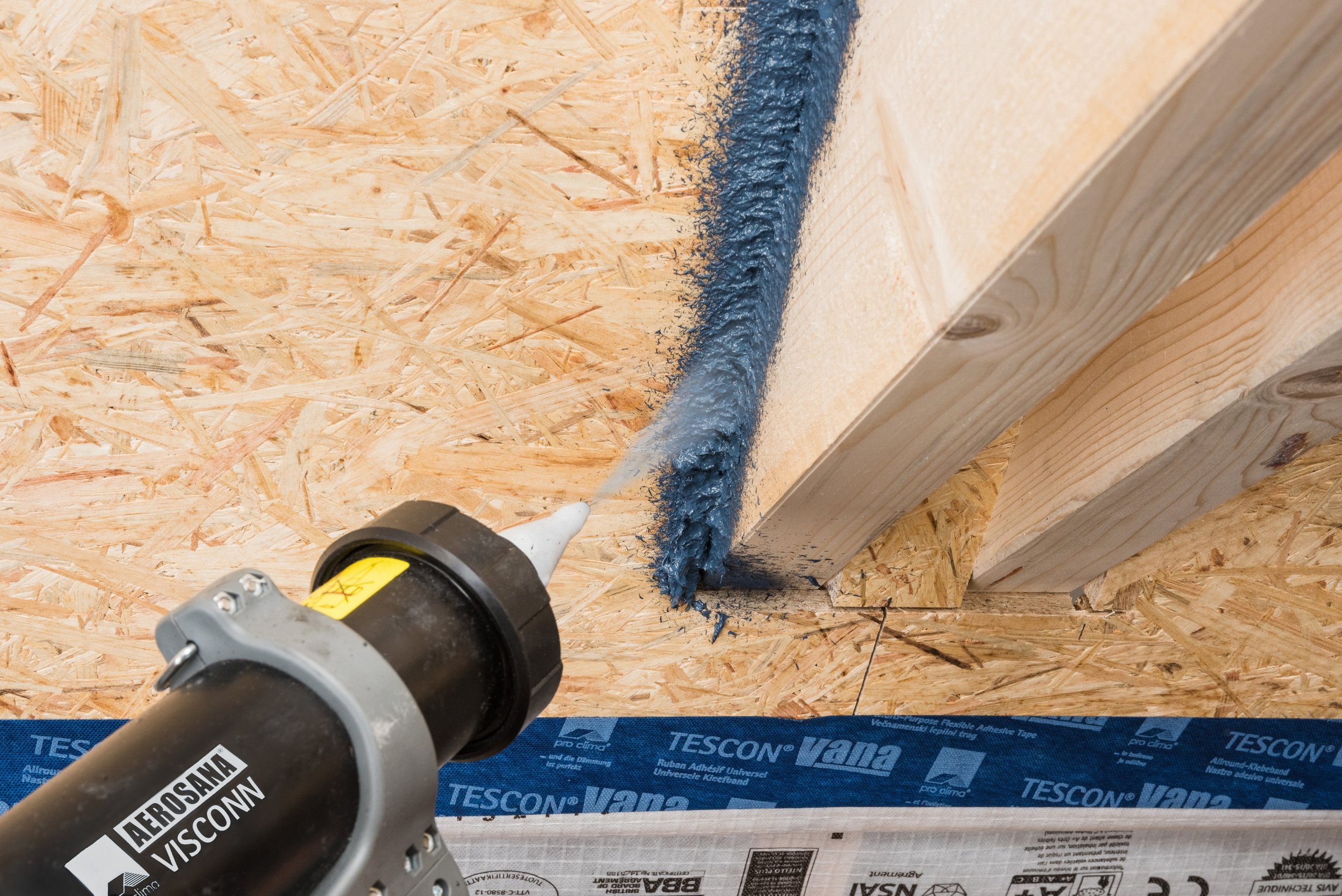What airtight products mean for retrofit success
Airtightness is the foundation of a fabric-first approach and in creating high quality, low energy demand buildings.
Buildings are responsible for 40% of the global energy usage, to which heat losses caused by air flow are responsible for 30%. Furthermore, up to 1/3rd of heating is lost through the cracks and gaps in the building envelope.
But airtightness is not just about energy savings: good airtightness contributes to improved comfort, building durability, and better indoor air quality, provided it's paired with appropriate ventilation.
Yet despite its importance, airtightness products can be a rare sight on site.
What do airtightness products do?
Airtightness products, which can include membranes, grommets, adhesives, vapour control layers and even sealants, are specialised materials designed to help seal any gaps in the building, so air doesn’t leak in or out. Common places for air leaks are around the pipes and cables that pass through the walls, around floor joists, beneath windows sills, and spaces between the roof and the walls where they do not join up correctly.
Achieving airtightness helps keep heat inside, saves energy, and makes buildings more comfortable and efficient. Airtightness tapes and membranes have long been established as useful solutions to a wide range of airtight detailing, being flexible and easy to use for installers.
Ecological Building Systems Ecological Building Systems is a sustainable construction materials supplier. Founded in Ireland over 25 years, they have been at the forefront of environmental and sustainable building products, delivering innovative, ecological building materials and solutions and training. Their UK division was set up in 2007 and is based in Carlisle, Cumbria, where they have extensive warehousing and distribution facilities to distribute their products throughout the country, as well as airtight and retrofit exemplar training facilities
For the last 5 years, they have been one of the staples at our low carbon construction practical training programmes, and their products are now becoming part of the fabric of the BE-ST campus, used in the retrofit of Scotland’s National Retrofit Centre (SNRC).
In the retrofit of SNRC
Scotland’s National Retrofit Centre is aiming to achieve Enerphit standard upon completion. Airtightness products are crucial to succeeding.
As well as providing technical project support, Ecological Building Systems are providing a range of durable membranes, tapes and sealants for the retrofit.
Lorna Graham, Deputy General Manager at Ecological Building Systems says, “Our innovative and best in class products are fundamental components in achieving the ambitious performance goals required for the retrofit of Scotland’s National Retrofit Centre.”
“With many synergies in our visions and missions, BE-ST and Ecological Building Systems are a natural fit and we’re proud to have been long-term supporters of the invaluable work being undertaken. The next exciting development, as part of a decarbonisation programme across Scotland’s public sector buildings is no exception.”
The products
Ecological Building Systems has supplied products from the Pro Clima range of airtightness and windtightness solutions. Most products have third party certification from the BBA and Passive House Institute confirming performance and suitability for low energy retrofits and EnerPHit projects, as well as recently receiving EPD certification, representing the most expansive range of assessed membranes, tapes and glues to date.. These quality products can be quickly and easily installed delivering efficiencies on site to maintain project timescales and provide time and cost savings.
Examples of the products in the build include Pro Clima Solitex Adhero 3000, a self-adhesive vapour-permeable external breather membrane used on masonry and timber structures providing a wind and weathertight seal on buildings, and Pro Clima Tescon Vana, a multi-purpose airtight adhesive tape used to provide an airtight seal on membrane overlaps, edges and penetrations and to connect to airtight accessories.
“Our products are designed to work synergistically together as well as being used to bridge the gap in conjunction with adjacent surfaces providing a holistic approach with other airtight materials,” Lorna says. “In this instance, our products are being used in conjunction with the CLT frame to provide an effective airtight and vapour control strategy for the construction.”
Without the quality and versatility of these products, achieving the level of airtightness required would be far more difficult, if not impossible, for the retrofit project.
Training for readiness
Key to achieving airtightness is understanding the philosophy behind it and the attention to detail required. To help with this, Ecological Building Systems provide training, CPD sessions and virtual webinars on various low carbon construction methods. The Ecological Building Systems training centres, in Carlisle and Ireland are equipped with product showcases and practical rigs, offering hands-on training in airtightness and the application of natural materials in retrofitting in traditional buildings.
Project Manager of the SNRC project, Gavin Johnson, had the chance during a visit to Ireland last year to take part in Ecological’s Retrofit in Practice training course and installed an innovative product – an internal and external lime plaster with cork that doubles as insulation – Diasen Diathonite is a retrofit solution ideal for traditional solid wall buildings. The group then also applied an internal wall insulation system, Retro EcoWall® created by Ecological Building Systems, it’s an advanced system for retrofitting traditional buildings, combining their breathable cork-lime plaster, Gutex wood fibre insulation, and natural finishes. It provides energy-efficient, moisture-managing insulation for solid walls while preserving historic integrity.This hands-on experience highlighted the importance of simple, confidence-building training methods in retrofit. Gavin was also impressed and inspired by
the extent of knowledge and passion shown by the Ecological team in delivering the training.
Ecological Building Systems also offer virtual training throughout the year, from topics such as Passivhaus, through to wood fibre insulation and CLT. They also supported the National Construction Training Centre in Ireland with the development and construction of its mobile training unit.
Ecological takes pride in providing expert technical support for their product suite across projects. With a dedicated team of 10 Technical Specification Advisors located throughout the UK, they play a crucial role in offering guidance from initial specification through to on-site implementation.
Passivhaus training
Ecological has a long-standing partnership with BE-ST since our initial ‘Passivhaus in Practice’ training programme. BE-ST work with Ecological Building Systems due to their quality and industry-wide recognition, with their products routinely incorporated into BE-ST training sessions, even now. If you do our practical passivhaus training today in collaboration with Coaction, you will be sure to still see their products as part of the training day.
Looking ahead
The role of airtightness in achieving energy efficiency and occupant comfort has never been more important, and Ecological Building Systems’ certified airtightness products offer high-performance retrofit solutions.
Their collaboration with BE-ST ensures our work is underpinned by high-quality materials, practical training, and shared knowledge, supporting the sector to build better, healthier and more efficient buildings.




